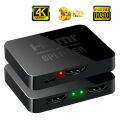Whether it’s the rich timbre of a violin or the electrifying strumming of a guitar, musical instruments have the power to evoke emotions and create beautiful melodies. But in order to truly appreciate the nuances and intricacies of these instruments, they often need amplification. Enter amplification equipment, the unsung hero that takes the raw sound of an instrument and turns it into a powerful, crystal-clear experience for both the musician and the audience.
From the humble beginnings of horn-shaped gramophones to the sophisticated sound systems of today, the world of musical instrument amplification has come a long way. Gone are the days when musicians had to rely solely on the natural acoustics of their instrument or the limited power of their voice. With the help of amplification equipment, musicians can now reach larger audiences, experiment with new sounds, and create an immersive sonic experience like never before.
In this guide, we will explore the diverse range of musical instruments and amplification equipment available, from traditional options like guitar amps and drum microphones to more specialized tools designed for specific instruments and genres. Whether you’re a professional musician looking to enhance your live performances, a studio producer aiming to capture the perfect sound, or simply an enthusiast curious about the world of music technology, this guide will provide you with the knowledge you need to navigate the dynamic landscape of musical instrument and amplification equipment. So, let’s dive in and discover how we can amplify soundscapes and take our musical experiences to a whole new level.
Types of Musical Instruments
When it comes to musical instruments, there is a wide variety to choose from. Each type of instrument produces its own unique sound, contributing to the rich tapestry of music. In this section, we will explore some common types of musical instruments.

- String Instruments:
String instruments produce sound by vibrating strings stretched across a resonating body. The strings can be plucked, struck, or bowed to create different notes and tones. Examples of string instruments include the guitar, violin, cello, and harp. These instruments offer a diverse range of sounds, making them fundamental in many musical genres.
- Woodwind Instruments:
Woodwind instruments are played by blowing air into or across a mouthpiece, which causes the air to vibrate and produce sound. The pitch of the sound can be controlled by using keys or finger holes. Popular woodwind instruments include the flute, clarinet, saxophone, and oboe. Each woodwind instrument has its own unique timbre and playing technique.
- Percussion Instruments:
פסנתר חשמלי
Percussion instruments produce sound by being struck, shaken, or scraped. They are integral in creating rhythm and adding texture to music. Drum sets, xylophones, tambourines, and maracas are all examples of percussion instruments. These instruments come in various sizes and shapes, allowing for a wide range of tones and effects.
By understanding the different types of musical instruments, you can appreciate the vast array of sounds that musicians can create. Whether it’s the melodic tones of a string instrument, the crisp melodies of a woodwind instrument, or the rhythmic beats of a percussion instrument, each type offers its own unique contribution to the world of music.
Understanding Amplification Equipment
In order to truly appreciate the sonic wonders created by musical instruments, it is essential to understand the role that amplification equipment plays in enhancing their sound. Amplification equipment acts as a bridge between the instruments and the ears of the listeners, allowing the subtle nuances and vibrant melodies to be projected with stunning clarity and power.
One of the key components of amplification equipment is the amplifier itself. This electronic device takes the electrical signals generated by the musical instruments and boosts them to a level that can be heard by large audiences. Amplifiers come in various types, including tube amplifiers, solid-state amplifiers, and digital amplifiers, each with its own unique characteristics and tonal qualities.
Another important aspect of amplification equipment is the speaker system. These speakers are responsible for transforming the amplified signals into audible sound waves. Speaker cabinets, which house the speakers, are designed to project sound in a specific direction, whether it be focused towards the audience in a concert hall or dispersed evenly throughout a room.
Furthermore, effects processors play a crucial role in shaping the sound of amplified instruments. These versatile devices allow musicians to add various effects such as reverb, delay, chorus, and distortion, among others, to enrich and personalize their sound. Effects processors can be used to create atmospheric textures or add a touch of uniqueness to a guitar riff, elevating the musical experience to new heights.
Understanding amplification equipment is essential for musicians, sound engineers, and anyone else involved in the world of live performances and studio recordings. It allows them to harness the true potential of musical instruments and create captivating soundscapes that resonate with audiences on a profound level. By delving into the intricacies of amplification equipment, one can unlock endless creative possibilities and truly amplify the magic of music.
Choosing the Right Setup
When it comes to selecting the perfect musical instrument and amplification equipment setup, there are a few key factors to consider. First and foremost, it’s essential to think about the type of sound you want to achieve. Different instruments and amplifiers offer distinct tonal qualities, so take some time to explore the options and find the combination that suits your musical style and preferences.
Another crucial aspect to keep in mind is the specific performance environment. If you frequently play in smaller venues or practice at home, a compact and portable setup may be more suitable. On the other hand, if you often perform on larger stages or in outdoor settings, you may need a more powerful and robust system to ensure your music reaches every corner of the space.
Lastly, don’t forget to consider your budget. Musical instruments and amplification equipment can vary greatly in cost, so it’s important to set a realistic budget and stick to it. While it’s tempting to invest in high-end gear, there are also plenty of affordable options available that can deliver impressive results.
Remember, choosing the right setup is a personal decision that should align with your musical goals and individual needs. Take the time to research and test different combinations to find the perfect match that will enable you to create and amplify your musical soundscapes effortlessly.






Recent Comments